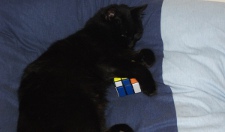Twisting Puzzles
Skewb - Simple Solution
Notation
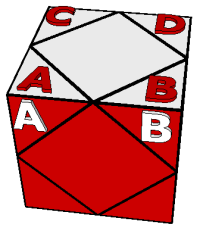
In the diagram, the top corners are labelled with letters. These replace the standard cube face letters when turning. The following shows the pieces that move when you do a B turn.
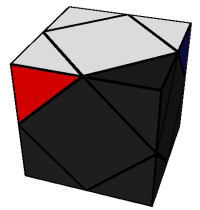
Step 1 - Solve The Top Face
You're on your own here. As with the cube, this is the most basic of phases. If you're ever going to remember any method for solving a puzzle, you need to get used to how the puzzle turns and where pieces move to. This isn't too tricky to do. Try to build the corners around a face colour. You need about 3 or 4 twists maximum to place a corner. In the end, what you'll have should match the image. The grey pieces can be anything - don't worry about them yet.
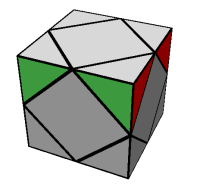
Step 2 - Solve The Face Centres
There are two algorithms that you can use to solve the face centres. They both cycle the centres of 3 faces and can be used repeatedly until you have all of the face centres in position. The face with the two orange corners is the front face in each image.
Front - Left - Down - Front
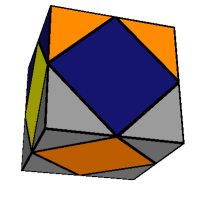
B' D' B D A D A' D'
Front - Right - Down - Front
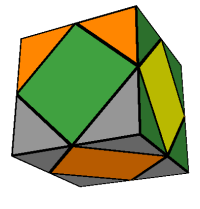
A C A' C' D' C' D C
Step 3 - Solve Bottom Corners
When the top face and the face centres are solved, the bottom corners will be in position although either 0, 2 or 4 of them may be twisted. No twisted corners is the solved case.
4 Twisted Corners
When 4 corners are twisted, two of the twisted corners form a pair on the bottom of the puzzle. These two corners should be the two bottom corners of the front face.
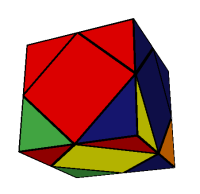
B' D B D' B' D B D'
2 Twisted Corners
When 2 corners are twisted, one of the twisted corners needs a 90° turn anti-clockwise, the other a clockwise 90° turn. Place the one which needs an anti-clockwise turn as the front bottom-right corner. The front face in the image is the green one.
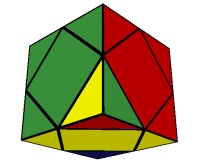
B' D B D' B' D B D' A' B A B' A' B A B'

